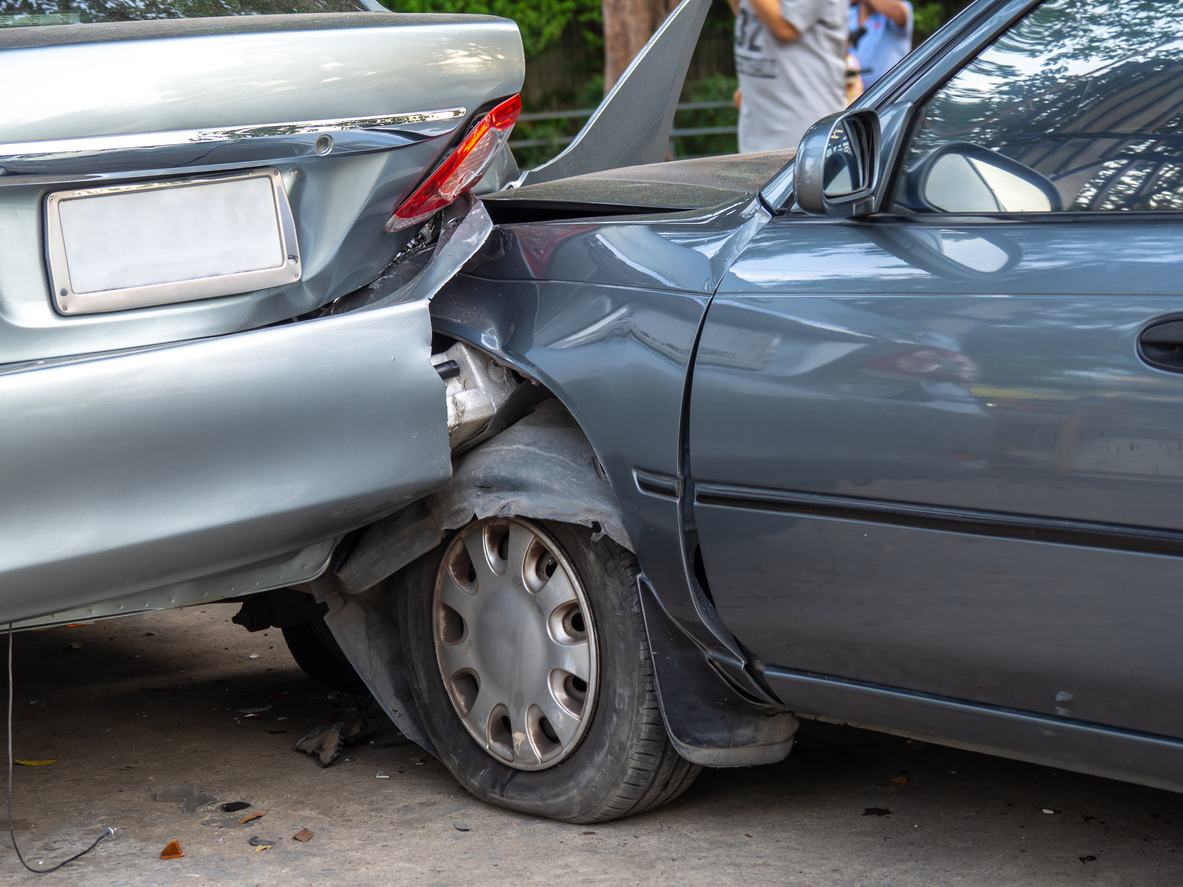
If you drive, you are very likely to eventually find yourself in an accident. Even if you’re careful and follow every rule behind the wheel, not everyone on the roads will do the same.
At the offices of Langdon & Emison, Attorneys at Law, we understand how insurance companies work, and we know how to convince them your case is serious. After all, we’ve spent the last three decades working to get our clients the compensation they need after an accident.
If you are looking for an experienced car accident lawyer in Chicago, call us at (866) 931-2115 to schedule a free, no-risk consultation.
In the meantime, let’s look at some of the most common reasons for car accidents. Accidents will happen, but if you avoid these scenarios, you can at least reduce your risk.
Distracted Driving
One of the leading causes of accidents in the U.S., it’s estimated that up to 24% of all accidents across the country are caused by some form of distracted driving, in part or in full.
According to the Centers for Disease Control and Prevention (CDC), an average of nine people a day are killed by distracted driving, with up to 1,000 people injured in such accidents daily. Cell phone use alone accounted for nearly 30% of accidents in 2015. Like 47 other states, Illinois has a ban on texting while driving. Even though over 30% of the population thinks they multitask well enough to drive and text, you never should.
But distracted driving goes beyond cell phone abuse. Phone-related distractions account for only about 14% of all distracted driving accidents. Adjusting your music, talking to other people in the car, or even letting your mind wander on a familiar roadway can result in a distracted driving accident.
Safe driving requires total concentration. Most automobiles weigh around 2,000 pounds. That’s too much mass moving at high speeds to pay attention to something other than the road.
Reckless Driving
Many drivers overestimate their driving ability and take unnecessary risks, either to cut down on driving time, stroke their ego, or simply for the thrill. This can include passing other cars on the right-hand side (either on the shoulder of the road or even the sidewalk), driving the wrong way down a one-way street, making sudden lane changes, or aggressively maneuvering through traffic.
One thing too many drivers forget, though, is they’re not the only ones on the road. It may be a rush to drive aggressively, but it can turn tragic very quickly. Reckless driving has real consequences that can never be undone.
Speeding
Speed limits are there for a reason. It’s not unusual to see speed limits as high as 70 or 80 mph on interstates and highways. In towns or urban areas, it’s rarely higher than 45 mph, and they can go as low as 20 around schools or areas with heavy pedestrian traffic.
It’s unwise to drive faster than the posted speed, regardless of how late you might be.
According to the Illinois Department of Transportation (IDOT), speeding accounts for 33.7% of all crashes, 36.1% of fatalities, and 38.2% of injuries in the state. It’s not unusual for speeders to overestimate their skill behind the wheel, adding reckless driving to the mix. It’s a high-speed recipe for disaster.
Disregarding Traffic Rules
Like speed limits, traffic rules and regulations might seem to be an inconvenience. However, they exist for the protection and safety of all drivers. Disregarding traffic rules can include ignoring stop signs, running stoplights, ignoring right-of-way, and more.
Always pay attention to signs. If a sign says no U-turns or the right lane is closed, there’s a reason for it. It all works better – and safer – when everyone is following the same rules.
Over 94,000 people were injured in car accidents in 2018, according to the IDOT, causing 1,035 deaths. Pedestrian deaths accounted for 166 fatalities, many of which could have been avoided if drivers followed the rules of the road more closely.
Again, driving on or walking near roads is how everyone gets to where they need to be, and their life is just as important as yours. Be diligent when it comes to the rules of the road, and use defensive driving tactics when others seem like they may revise those rules according to their own whims.
Driving Under the Influence
It’s 2020 and, unfortunately, people are still driving while under the influence of alcohol or drugs.
According to the DUI Fact Book, published each year by the Illinois Secretary of State, one in four of all fatal accidents were caused by drivers drunk behind the wheel. Like most states, Illinois considers a Blood Alcohol Content of 0.08% or more as legally intoxicated. Over 75% of people arrested for DUIs are men.
This year, Illinois became the 11th state in the union to legalize the recreational use of marijuana for people over the age of 21. This throws another wrinkle in, though it’s too soon to judge the effects, positive or negative.
However, one of the places it’s illegal to light up is in an automobile. The State of Illinois considers a THC blood count of five nanograms or more per milliliter as “under the influence.” The State Police have created a new DUI Task Force to determine the best way to test drivers, but the smartest bet is to never smoke and drive.
Driving While Tired/Sleepy/Exhausted
Like distracted driving, driving while tired or without enough rest can be dangerous. Whether it’s because you’ve overworked, hadn’t gotten enough sleep, or simply been on the road too long, driving while tired dulls your senses and slows down your reaction times. Furthermore, being tired may cause your mind to wander, leading to even more distracted driving.
A good rule of thumb on long automobile trips is to take a 15-minute break for every two hours of driving time. It’s also recommended to drive no more than eight hours at a stretch. Driving for long stretches is tough on the body, so take the opportunity to walk around and work out the kinks whenever you can.
Poorly Maintained Vehicle
Your automobile is a high-performance machine, one that takes a lot of punishment because of its daily use. Even if you just drive to work and back every day, the wear and tear on your car can lead to an accident.
Take care of your vehicle to reduce the risk of maintenance problems triggering a wreck. Get your oil changed regularly; every three months or 3,000 miles is the usual suggestion, and take it in for a tune-up once a year. Have your brakes inspected regularly. Follow the maintenance schedule in your owner’s manual as diligently as possible. Not only will these tasks keep your vehicle in good running condition, but it can help you find problems before they get too serious, reducing the cost of repairs.
A car’s tires probably need the most attention and care. Regular rotation and occasional rebalancing is a must, and they should always have the proper amount of air – between 32 and 36 psi, depending on the manufacturer’s specs. Don’t let them get worn down and slick, either, as that will reduce your car’s grip on the road, especially in bad weather.
Remember the penny trick: if you place a penny in the tire’s groove and can see all of Honest Abe’s head, it’s time to get a new tire. He’ll never steer you wrong.
Poorly Maintained Roads
Sometimes, an accident just isn’t your fault. Like your car’s wear and tear, the average stretch of road or highway takes a continual pounding. This can lead to broken pavement or potholes, both of which can cause an accident or damage to your car when hit at high speed.
While highway crews across the state do the best they can, keeping all of Illinois’ roads and highways in good shape is a never-ending chore. Some towns and jurisdictions may not have the funding to take care of issues immediately. Pay close attention to the condition of the road wherever you are, and don’t let a pothole add to your misfortune.
Poor Weather Conditions
Similar to road conditions, the average driver can’t do anything about the weather. Illinois sees rainstorms, blizzards, and all manner of foul weather that can make driving even a familiar road a challenge. Use tire chains if the roads have snow on them, and slow down in hard rain.
One thing many drivers don’t consider is the state of the road after a short, hard rain. A hard enough rainfall will loosen the oil, grit, and grease that’s packed down on to the road, making it incredibly slick. The most dangerous time is just after a downpour starts, even more so than during a long storm. If the weather’s warm, it’s especially dangerous. Be careful and take your time.

